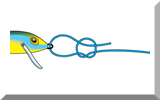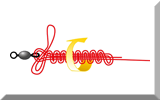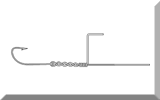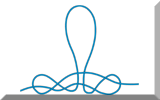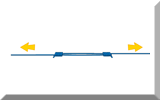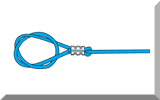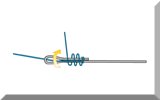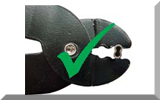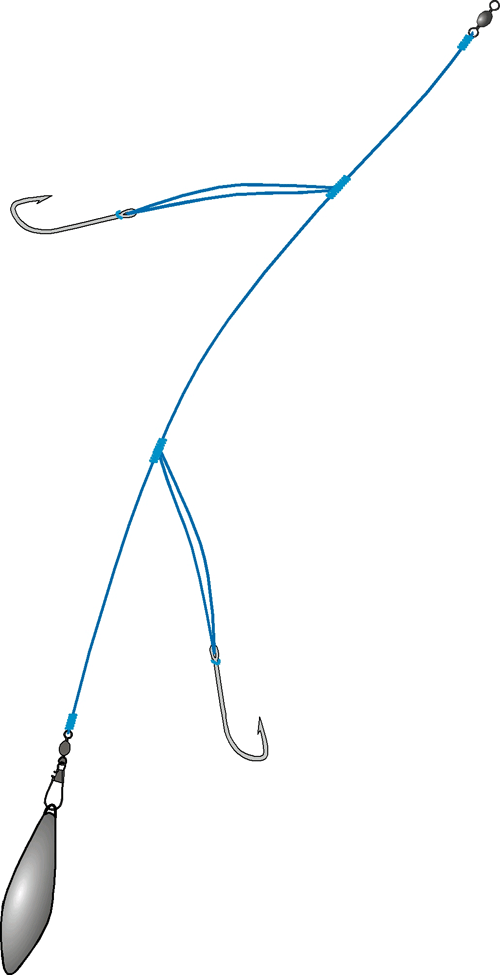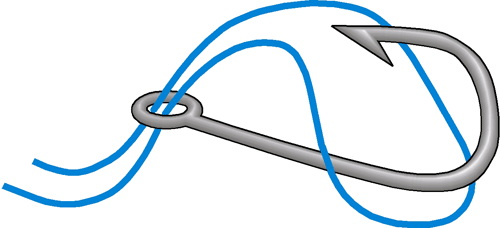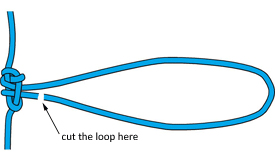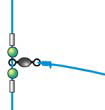When to Use ?
The Paternoster Rig
The paternoster rig is a multi-hooked bottom fishing rig best used from an anchored boat or a pier when there's not much tide running.
Slack line should be avoided with this rig, as a biting fish will feel the resistance of the lead and drop the bait, long before it can be registered at the rod tip.
Whatever form of bottom fishing you're doing, you should use the lightest sinker that will do the job, but it's particularly important with the paternoster rig.
In its simplest form it's made up as shown below, but it's also the basic rig from which most modern surfcasting rigs are derived - proven rigs like the Portland Rig and the various derivations of the Flapper Rig.
The Simplest Form, with Dropper Loops
Two hooks on short snoods are the norm, although three are sometimes used.
To reduce the chance of tangles the dropper loop snoods should be tied in the line such that the hooks can't reach each other when the main line between then is tight.
Put another way, the combined length of the loops must be shorter than the distance between them.
Push the loop through the eye of the hook, and then pass the hook point through the loop and pull it up tight to the eye - that 's a cow-hitch.
The dropper loop and cow-hitch approach makes hook changing quick and easy, but the double line snood is highly visible and may be off-putting to the fish.
To get around this, after tying a dropper loop of around 4 inches (100mm) long and before doing anything else, snip off one part of the loop close to the knot, leaving a short tag end.
This converts the loop to a stand-off snood of around 8 inches (200mm) or so.
Then tie on the hook with a uni-knot if it has a straight eye, or a snood knot if it hasn't.
Although improved, this version of the rig is still prone to twists and tangles. A further variant known as the Flapper Rig largely overcomes this problem.
The dropper loop approach to making a snood is replaced by the arrangement shown here. A swivel, a couple of beads and a circular section sleeve crimped on either side to locate in place. Now the snoods are free to rotate in all directions, with the swivels releasing any twist and turns that may otherwise develop.
The Flapper Rig is by far the best variant of the paternoster rig to use when shore-casting, or fishing downtide (or uptide with a spiked lead) from a boat.
There are two further tweaks - a 'two up' rig, which means that both hooks remain above the sinker, and a 'one up, one down' version, where the lower hook length is much longer so that it hanks below the sinker and allows the bait to flutter around on or near the seabed. |
